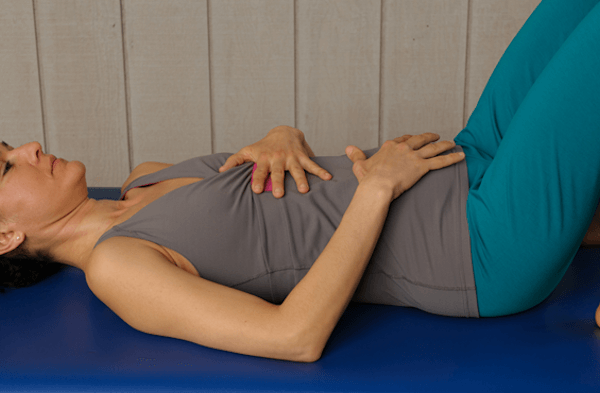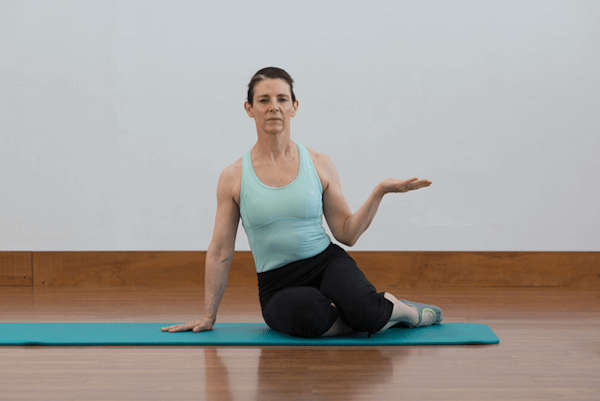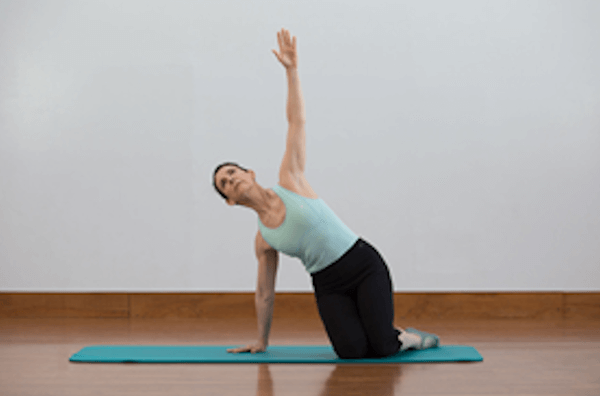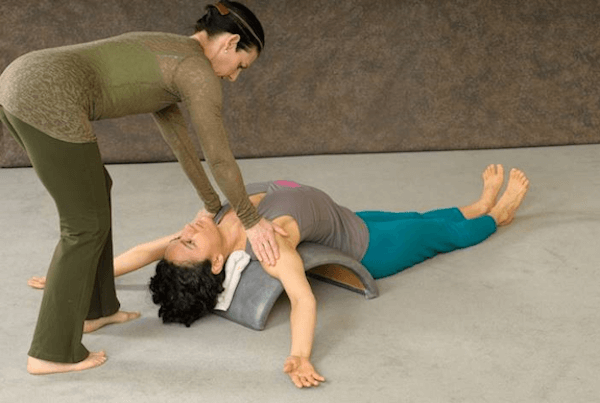Symptoms of the aging spine include the following: friends or family noting that you look "bent over," a subtle groan coming out every time you reach down to tie your show, a waistline that seems to be expanding despite your steady weight. Isn't aging lovely?
With gravity pulling you down on a daily basis, you need strength and endurance just to hold yourself up. If we relax and slump back in the desk chair or while standing in front of the stove too often, the eventual result is a sore back and a weakened, distended abdomen. While everyone deserves a good break from the stresses of daily life, prolonged sitting is now considered by many experts to be the new harbinger for many chronic diseases, including diabetes and heart disease.
Our spines change as we change over time—it has the effects of our lives written all over. Whether it's daily habits putting a strain on the 50-plus joints of the spine or accidents or illnesses that affected the spine, it's important to care for these bones as we age. With some tools, you can counteract the effects of aging on your spine, increase your sitting endurance, experience less stiffness and maybe even less groaning over time.
5 Moves for a Better Back
Before you begin, there are a few things to remember. First off, go slow. It boils down to lifestyle, which means the consistent application of positioning, breathing and stepped exercise, progressing from core to larger movements. In dealing with the back or any therapeutic application of the Pilates method, there are three phases: somatic work focusing on the mind-body connection through small movements and imagery; corrective work consisting of specific movements to target specific issues; and conditioning, which includes larger exercises using challenging positions, forces and ranges of motion, plus balances.
These first two somatic exercises are a great way to check-in to see how your body is feeling, create awareness of all your body parts and lessen overall stress. The back is highly susceptible to stress, so consider using these exercises to wind down at night or prepare for the day for maximum benefit. They are also a great way to prime the body for more challenging work. From there, you will work on core corrective and conditioning moves to further strengthen the muscles required to hold your spine long, tall and strong for years to come.
The Pelvic Clock, Part One: This first move is a somatic internal exercise, which can be performed on an exercise mat. To perform, imagine your pelvis is like the face of a clock with 12 being at the naval and six at the pubis. Gently inhale as you rock the clock face back up toward 12, then softly exhale from the back of your throat with an elongated "ha" as you shift back to six a few times. Then, repeat the rock in a horizontal rolling motion, imagining that you're painting from three at your right hip over to nine. Finally, try moving fully around the clock face from 12 to one to two and so on, gently pressing your low back into the mat.

The Pelvic Clock, Part Two: From the initial position, bend your knees. Breathe into your upper body, trying to fill the ribcage, neck, jaw and eyes with air. Exhale through open lips and inflate your abdomen and tailbone. This movement should be very small. Repeat several times to create a gentle undulating motion in the spine, which will help calm the body.

Inner Unit: The term "inner unit" refers to the four muscle groups that are critical for the stability of the lower back. This exercise hits them all in a safe way, which makes it excellent for beginners. Begin on your hands and knees, which your hands directly below your shoulders and your elbows slightly bent. Point your tailbone to the wall behind you to keep your back in one flat line. As you exhale, elevate the knees about two inches off the floor. Stay here with your knees hovering for two to three breaths, then return the knees to the floor. Repeat two to three more times.

Mermaid: This core conditioning exercise is an excellent way to introduce beginners to side hip lifts. Begin by bending your legs and placing them comfortably to one side of your body, much like a mermaid would sit. Imagine you have magnets between your sitting bones to gently hold them together. Sit up tall with your hand held to the side as if it were holding a bar of soap. From here, roll toward your knees as you make a rainbow motion with your arm, moving it over your head until you touch the floor in front of your mat. Then, reach your arm up high to rainbow it back to the starting position and sit back down. Repeat this motion four times on one side, then switch to the other side.

Mermaid positon one.

Mermaid position two.

Mermaid position three.
Foot to Core: This move connects the pelvis motions and coordinates with the feet. To perform, grab a book about two to three inches in height and grab a chair to support yourself. Begin by lining up the second toe in a vertical line with the middle of your knee cap to establish balance. From here, move your right leg forward, as if you are dipping your toes into a pool of water just in front of your book. Then move the foot to the back, behind the book. Knee the supporting knee slightly bent throughout the movement. After a few back and forths, switch legs.
Finally, at the end of the day, take a little time to unwind and lay back over an arc. A supported backbend is one of the best things you can do to stretch your back. If you don't have an arc, stack up some pillows, lie back so that your spine is in a comfortable bend, open your arms out to the side and breathe.

Make a pact with yourself to take care of your spine starting today. Using this simple strategy, you will soon see a difference in your balance, back comfort and in your ability to do more.
See more:
|
|



























.png)

